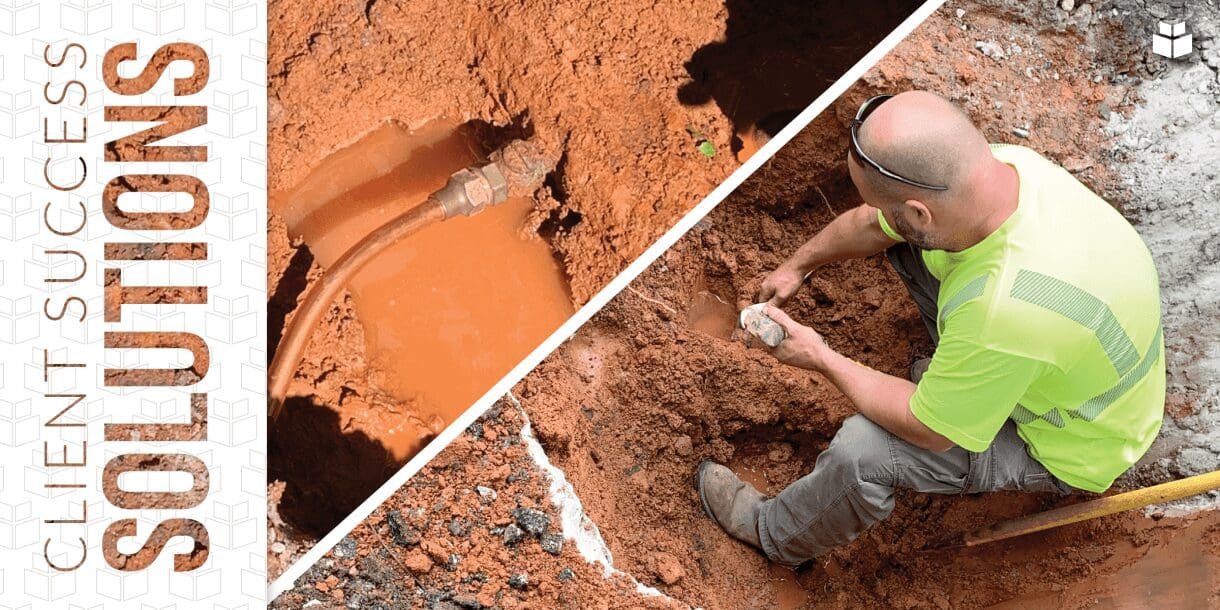
The health risk presented by lead in water got renewed attention with the crisis in Flint, Michigan, that began in 2014. A change in the City’s source water in combination with unfavorable water chemistry caused lead in the distribution system pipes to enter the drinking water. While distribution of clean water remains a vital mission for municipalities across the nation, the topic was back in the spotlight when late last year the Biden administration released its Lead Pipe and Paint Action Plan, which included Lead and Copper Rule Revisions.
The plan promises to deploy catalytic resources from the Bipartisan Infrastructure Law while leveraging every tool across federal, state, and local government to deliver clean drinking water, replace lead pipes, and remediate lead paint.”
The goal is to replace all lead pipes in the United States over the next 10 years. According to the Biden administration, $15 billion is being allocated from the infrastructure law for lead service line replacements through the Drinking Water Safe Revolving Fund (DWSRF), in addition to $11.7 billion in SRF funding for water and wastewater infrastructure. In 2022, the Environmental Protection Agency (EPA) will allocate $3 billion from the $15 billion for lead pipe replacement allocated under the infrastructure law. This is in addition to the $350 billion under the American Rescue Plan (ARP) that can be used for lead pipe replacement projects.
WithersRavenel understands the challenges of undertaking lead service line replacements projects. The biggest obstacle is typically quality and availability of data. Service line materials are often not recorded on municipality records and the only way to truly know the type of material is to expose each service and take an inventory. It’s tedious, time-consuming, and expensive to dig each service line across a service area, but it is the only way to confirm the service materials of those that could not be ruled out through reviewing records. Any existing data or records that could help rule out the possibility of a lead or galvanized pipe (which was historically installed with lead-based solder) is valuable and reduces the number of services that need to be physically identified.
In 2019, WithersRavenel’s Geomatics Department worked on a project for the City of Raleigh to locate and identify service line material. After the lines were identified, our firm compiled contract documents and assisted project bidding to have the galvanized lines replaced.
According to WithersRavenel Project Engineer Casey Garland, PhD, PE, We can rule out the presence of lead service line a few different ways.”
Once we’ve ruled out all the service lines that aren’t lead, it narrows down the pool significantly. With this reduced pool of service lines, we can then begin to identify line material individually by digging or vacuum excavation,she said. The timeline for this phase is entirely dependent on the size of the municipality and the quality and quantity of existing data.”
Some ways to rule out lead service lines include:
- Lead service lines were banned from use in 1988, so any construction after that would have used another pipe material.
- When water mains are replaced, the municipality also replaces the service line from the main to the water meter. If the water main was replaced in the last 30 years, service lines connected to it would not be lead-based.
- When water meters are replaced, the service line can be identified and recorded.
The second phase of this process is replacing the service lines identified as lead or galvanized. Municipality staff are typically capable of replacing these lines but lack the time to complete them,Garland said. Replacing the lines can be bid out for replacement at a higher rate but, of course, costing a bit more.”
Fortunately, the above-mentioned new funds that are coming available should help accelerate replacement and provide relief for municipalities that have not been able to budget for replacements over the years.
The biggest challenge in this whole process will likely be human power,Garland said. As it stands today, there’s plenty of construction to keep the industry busy for years. We’re about to have enough funds dumped into the system to keep the industry busy for decades. Finding enough people to do the work will be the challenge.”
Following the review of the Lead and Copper Rule Revisions (LCCR), an EPA fact sheet from December said: Lead service line inventories that will be developed under the LCRR are necessary to achieve 100% removal of lead service lines. EPA intends to maintain the requirements for information to be submitted in the initial lead service line inventory by the current October 16, 2024, compliance date.”
Municipalities have been anticipating these changes. Lead service line replacements have been on folks’ radars for the past couple years from the upcoming rule revisions,Garland said.
Now that more stringent inventories and replacements will likely be required, municipalities are looking for a solution to meet the new rule requirements,she said. With all the ARP money coming through as well, municipalities will have the funding and are now just looking for people to complete the work.”
WithersRavenel’s multidisciplinary capabilities come into the picture on such projects, with our funding and asset management capabilities aligned with our geomatics group and utilities engineers.
We have a methodology for service line identification and the software to establish or update service line inventories,Garland said. The process of replacement is streamlined at WithersRavenel since we can also handle contracting to replace lines.”
Have questions about the new lead pipe replacement funding and requirements? Reach out to Casey Garland in the Utilities Department at cgarland@withersravenel.com, Jonathan Nichols in the Geomatics Department at jnichols@withersravenel.com, and Amanda Whitaker in the Funding and Asset Management Department at awhitaker@withersravenel.com.
